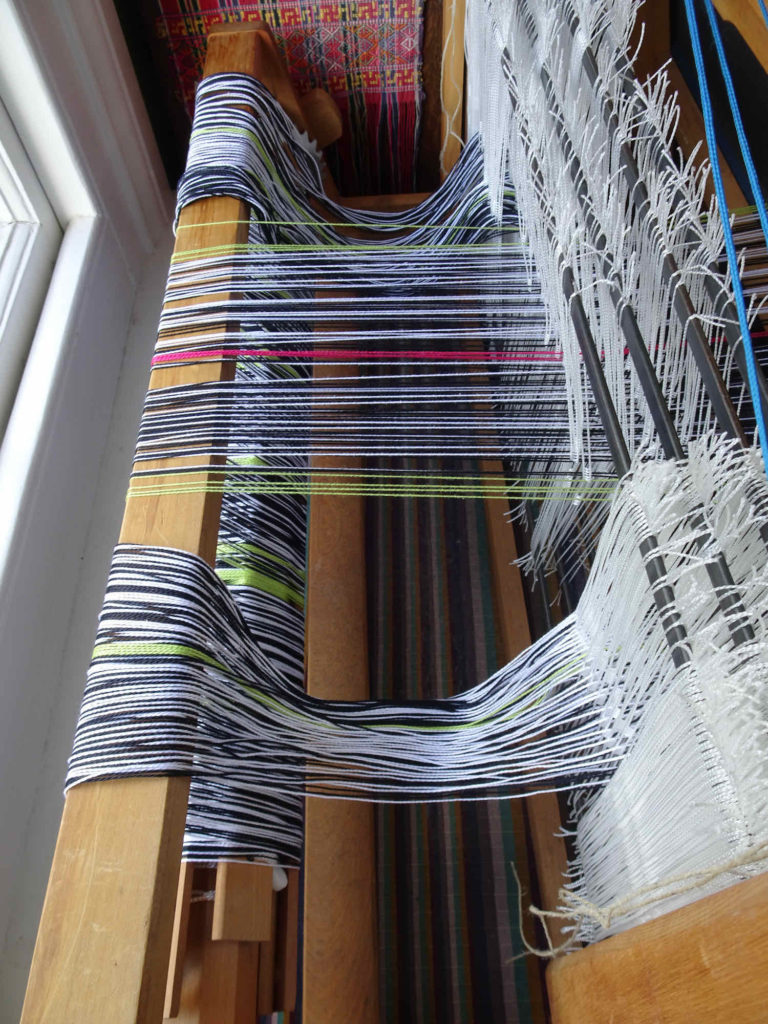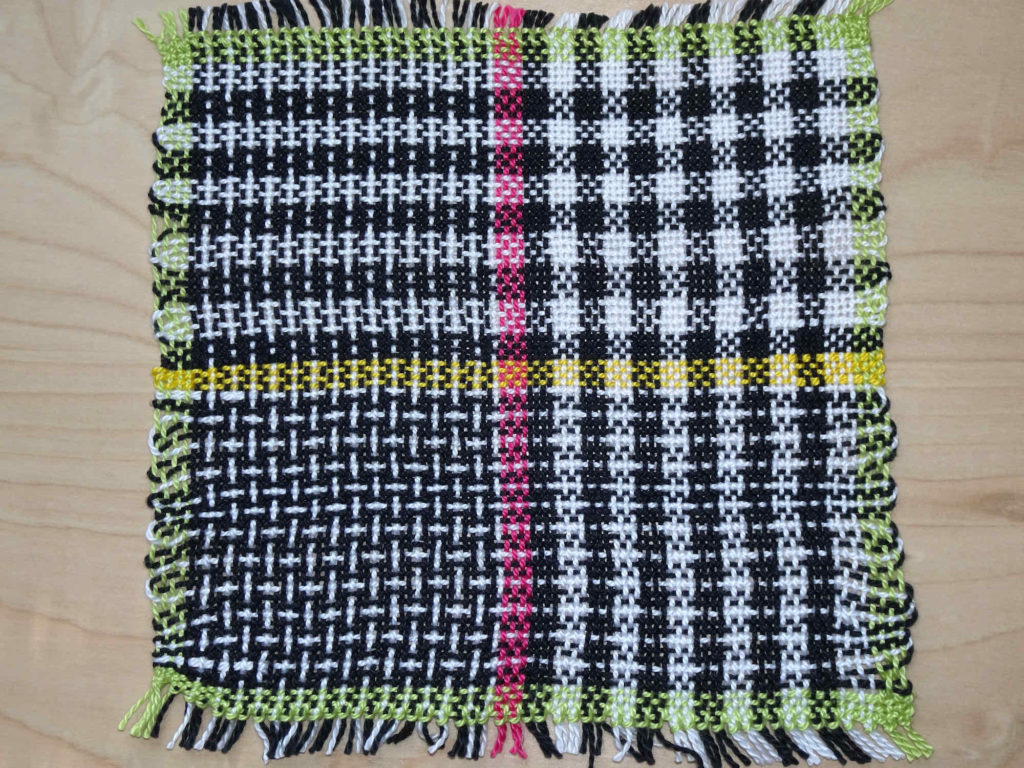As I had about 2m of warp remaining, I decided to play with the sett. I was keen to see how the fabric turned out if the sett went from 16 to 14 to 12 and even to 10 epi. I also changed the ppi as I wanted to have balanced fabric.
As the 16epi fabric was already the entire width of my loom, I resleyed using only two central sections of warp ends – DDL and DDDDLLLL. I also decided to replace the central green stripe with a bright pink stripe (I added 4 ends of ~2m each).

DDL & DDDDLLLL warp ends ready for resleying at various setts 
Resleyed at 12 epi in 8 dpi reed (1,2 ends per dent) 
Weight on the new pink warp ends to provide tension 
The back of the loom after adding pink stripe and resleying with central sections only
The main problem I had while weaving these samples was when winding the warp on. I discovered that I needed to pull the unused warp threads tight at the front so that they unwrapped from the back roller together with the warp ends being used.
There were some minor issues when attempting to beat the required ppi to achieve a balanced weave with the sett opened up to 12 and 10 epi, but I managed to get pretty close to balanced.
Once all pieces had been completed, they were measured, washed in a normal machine cycle with warm water, dried and remeasured. There was about 1cm shrinkage in both width and length.
Here are the samples resulting from this experimentation with sett – all shown after washing. You can see how the fabric opens up as the sett decreases.
Yellow stripe = 14epi/14ppi (plainweave and 2/2 twill)
Blue stripe = 12epi/12ppi (plainweave only)
Purple stripe = 10epi/10ppi (plainweave only)

14epi/ppi 2/2 twill 
14epi/ppi plainweave 
12epi/ppi 
10epi/ppi
I also did an up-close comparison of each sett sample including 16epi (manufacturer’s recommended sett for firm plainweave – 18-20 for twill – with 5/2 cotton). I kept the camera at the same distance from the fabric for this comparison.

16epi 2/2 twill 
14epi 2/2 twill 
16epi 
14epi 
12epi 
10epi